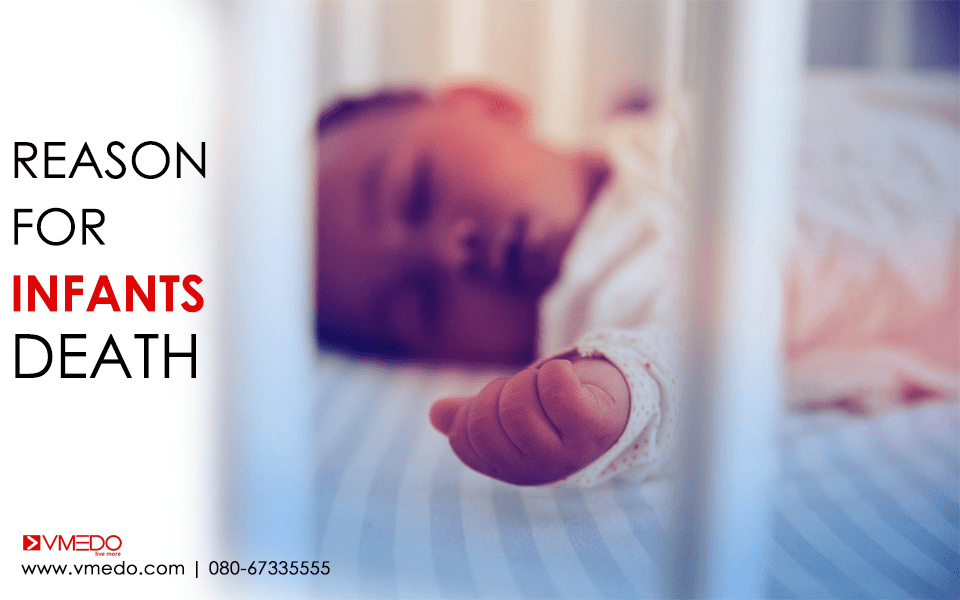Over 750000 neonates (newborns) die every year in India which accounts for one-third of the world’s newborn deaths. Although the Infant mortality rate (IMR) declined from 52 per 1000 live births in 1990 to 29 per 1000 live births, still India is one of the leading countries in Infant mortality.
The first 28 days of infants—carries the highest risk of mortality than any other during the childhood. This period is called “The neonatal period”.
There are neonatal ambulances to help bring the Infant mortality rates down that are increasing day by day.
The reason for Infant mortality includes infections; Environmental factors, the health of mothers and few physical factors.
Other reasons include upper respiratory tract infection, diarrhoea, and neonatal pneumonia, lack of literacy, poverty, poor sanitation & nutrition to be the most common reasons for high infant mortality in the world’s second most populous nation.
Causes for Infant’s Death
A combination of infections, physical and environmental factors can make an infant more prone to mortality which may vary from one child to other.
Birth Defects: Structural or functional birth defects are another prime factor that causes early infant death. It may be caused by genetic problems, lifestyle factor, environmental factors or problems with chromosomes and infections.
The common birth defects include heart defects, brain defects, sensory problems, cleft lip or palate, clubfoot, Down syndrome etc. In many infants, the portion of the brain that controls breathing and arousal from sleep hasn’t matured enough to work properly, which leads to sudden infant’s death.
Preterm Birth: Premature birth is the biggest contributor to the Infant mortality. A premature baby is one which is born before 37 weeks of pregnancy. It is also called as preterm birth. Premature birth leads to several Complications that make it difficult for the baby’s survival.
Preterm Birth increases the likelihood that a baby’s brain hasn’t matured completely & also leads to less control over breathing and heart rate.
The complications include respiratory disorders, weak lungs, intraventricular hemorrhage, Jaundice, Anemia or bleeding in the brain that can lead to death, lifelong physical, neurological or learning disabilities, an immature immune system.
The reason for the Preterm baby’s death is, they are not fully prepared to live in the outside world. They are more prone to infections & long-term health problems than a full term baby.
Premature birth is commonly seen in mother’s carrying twins or multiple babies. Apart from this, maternal health factors, smoking, drugs, alcohol intake habits during pregnancy, high blood pressure is also a prime reason for a preterm baby. This is why maternal health should be given prime importance to avoid unfortunate deaths.
Also Read: Now we have neonatal ambulance to transport premature babies
Low birth weight: This is the greatest survival challenge for the baby during the first few days of its life. Once the baby comes out of the womb, it has to support the life on its own which becomes dreadful for the infant. Most premature babies are considered to be low birth weight. But sometimes even a full term baby who is below 2500 gm is considered to be low birth weight.
Birth Asphyxia: A condition when a baby doesn’t receive enough oxygen leads to abnormal breathing, poor blood circulation, lack of energy, lack of urine output and blood-clotting abnormalities.
Sleeping Pattern: The items in a baby’s crib or its sleeping position can combine in increasing risk of mortality. The factors include:
Sleeping on the stomach or side leads to difficulty in breathing by compression of airways.
Overheating. Being too warm while sleeping can increase a baby’s risk of mortality. This is also called as “Crib Death”
This type of mortality is also called “Sudden Infant Death Syndrome (SIDS)” which means the baby’s unexpected death due to an unexplained reason.
Neonatal Pneumonia: It is one of the significant causes of Infants mortality. Pneumonia is an inflammation in the air sacs of the lungs. In most cases, the disease is caused by viral & bacterial infections. The symptoms include fever, cough, weakness, vomiting, and diarrhea, loss of appetite, headache, muscle pain, and trouble breathing. The disease can be decreased by timely vaccination, hygiene, sanitation, and nutritious diet.
Maternal risk factors/ complications: The mother’s health plays an important role in an infant’s well-being even after birth. Depression, severe anemia, high blood pressure can lead to early infant death.
During pregnancy, the mother’s health factors also affect the baby’s risk of mortality, especially if she:
Is younger than 20
Smokes cigarettes
Uses drugs or alcohol.
Although both central & state governments are aimed to reduce India’s Infant mortality rate, which is declined by 50% compared to last few decades, but lags behind most of its neighbors including Bangladesh, Sri Lanka and Nepal.
It is evident that improvement in Healthcare Services, community health programs, literacy level, proper hygiene, sanitation & timely vaccination can improve the Infant Mortality Rate (IMR).

